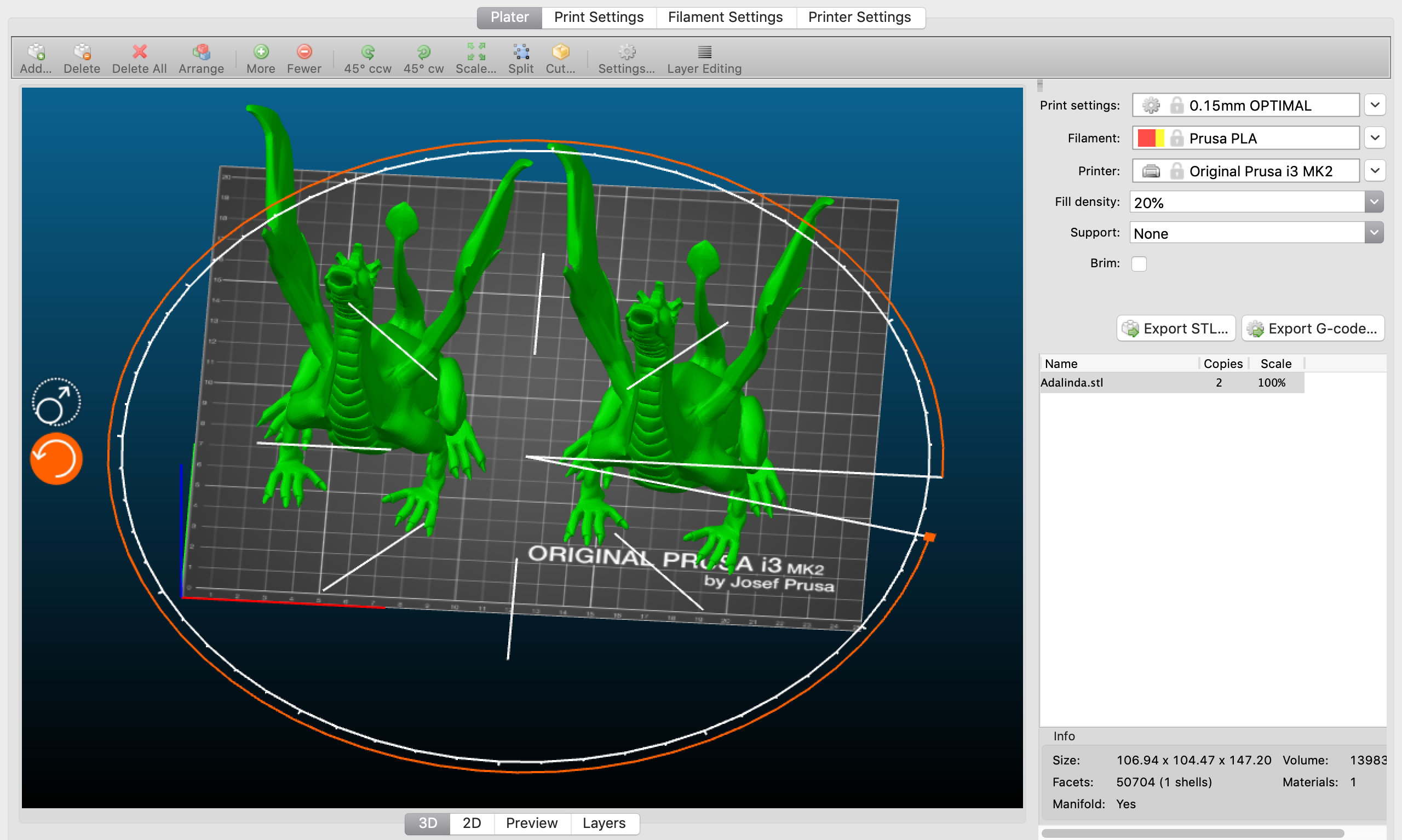


- SLIC3R PROFILE FOR CETUS3D SOFTWARE
- SLIC3R PROFILE FOR CETUS3D CODE
- SLIC3R PROFILE FOR CETUS3D DOWNLOAD
- SLIC3R PROFILE FOR CETUS3D MAC
OK, that's consistent with what I'd read before. I have no idea what the details are, but apparently Tiertime has some patent. That said, by all means, try other slicers. My understanding of the issue with PrusaSlicer/Slic3r supports is that they put down a layer of bridging underneath the supported layer. Since there is no underlying layer to flatten the bridging layer out, it will add to the thickness of the supported part with that stringy surface you're seeing on the underside that is causing the wall to be roughly one layer thicker. If you could get rid of the stringy stuff, it would be nearly identical in thickness. There are myriad reasons for doing it this way that were discussed in the GitHub threads. Not wrong or right, but their way and less suited for your purpose. If you've got a lot of pieces that need large supported areas like this that you can't work-around otherwise, give 'em a shot. And we’re still proud that our slicer is based on the original project written by Alessandro Ranellucci! Both projects now happily coexist and new features are frequently merged between one and another.This might be one area where Simplify 3D has an edge. Of course, it’s still open-source and you’ll find everything on our GitHub.
SLIC3R PROFILE FOR CETUS3D CODE
We’ve rewritten all of the Perl source code into C++ and especially with the 2.0 update, there were so many differences that it seemed appropriate to make the name more distinct. Speaking about the original Slic3r: with each update, Slic3r PE was moving further and further away from its original code.
SLIC3R PROFILE FOR CETUS3D DOWNLOAD
New users could mistakingly download Slic3r and wonder why it looks different from the screenshots in the 3D Printing Handbook and why it’s not configured for their Prusa printer. Even in our own materials, we often didn’t include the “PE” suffix, and the community used Slic3r and Slic3r PE pretty much interchangeably. Why the name change? First of all, the old name was really confusing. These changes culminated in May 2019, when we released a new version with a major UI overhaul under a new name - PrusaSlicer 2.0. A dedicated team of full-time Slic3r PE developers was established and new functions were being added rapidly. Slic3r Prusa Edition was released in November 2016 – read more about the launch here. The bottom line is that we decided to establish a fork of the original Slic3r project. At this point the co-operation with the detached original Slic3r team was unsustainable. We needed to make changes to the software, and the changes had to be done asap.
SLIC3R PROFILE FOR CETUS3D SOFTWARE
However, as Prusa Research was growing (very, very, very fast), we needed to be more flexible with the slicing software development. Jo and Alessandro in 2012 ( video interview) It was (and still is) an open-source and very powerful software. When Josef Prusa was looking for a leading slicing software for Original Prusa printers the choice fell on Slic3r. The Slic3r project was born in 2011 within the RepRap community as an effort to provide the growing 3D printing technology under the leadership of Alessandro Ranellucci an open-source slicer.
SLIC3R PROFILE FOR CETUS3D MAC
PrusaSlicer is available for Windows, Mac and Linux History PrusaSlicer is an open-source, feature-rich, frequently updated tool that contains everything you need to export the perfect print files for (not only) your Original Prusa 3D printer. PrusaSlicer (formerly known as Slic3r Prusa Edition or Slic3r PE) is our own in-house developed slicer software based on the open-source project Slic3r. Welcome to PrusaSlicer documentation (PrusaSlicer manual)


 0 kommentar(er)
0 kommentar(er)
